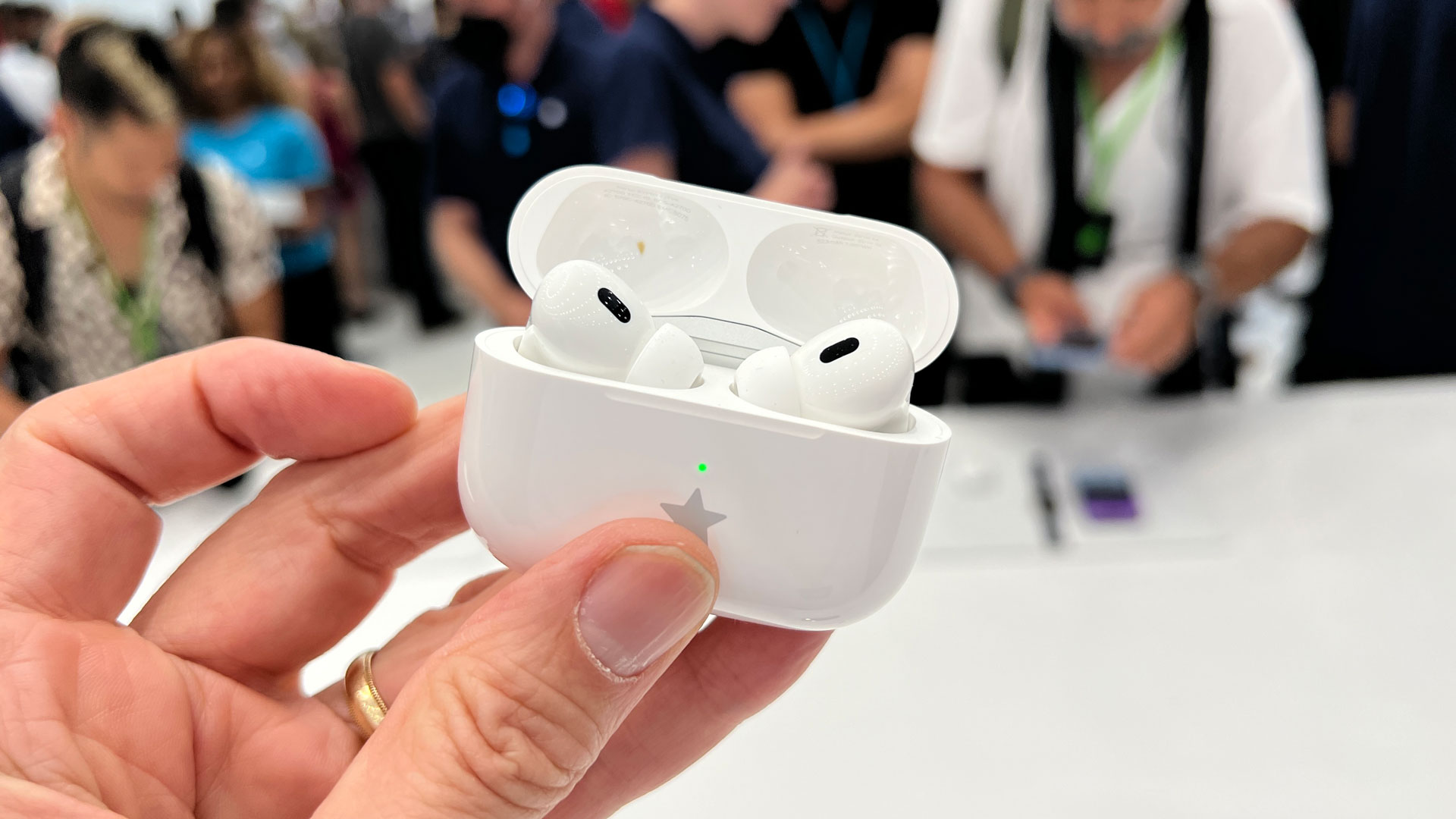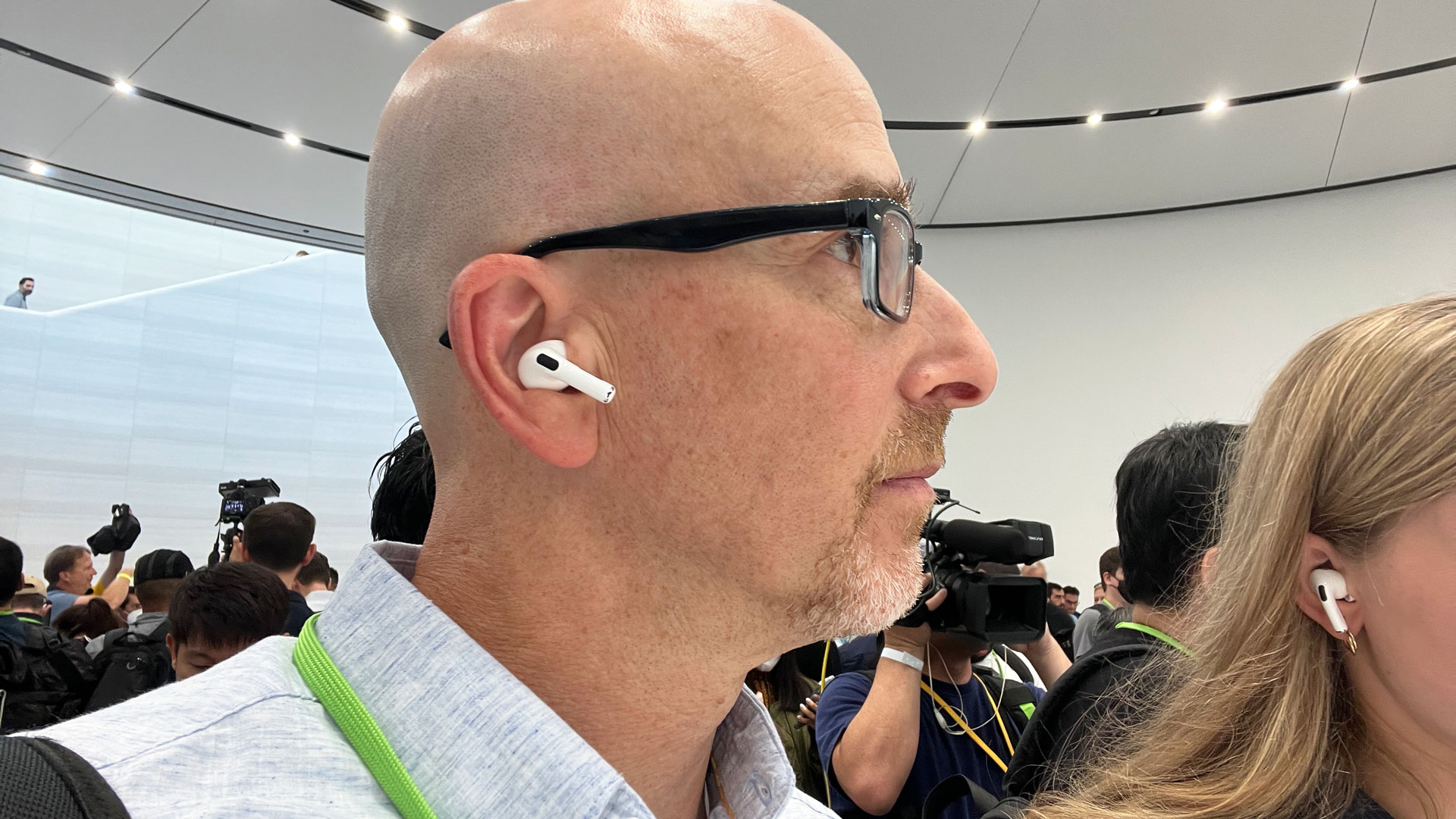What makes the AirPods Pro 2's noise cancelling so good? A billion transistors
And other little-known AirPods Pro 2 facts

Placing Apple's new AirPods Pro 2, which Apple unveiled at its Far Out event on September 7, in my ears in the Steve Jobs Theater's hands-on space, I was anxious to experience what Apple promised would be a 2x-better active noise-cancelling experience. Even in that bustling space, I was surprised by their efficacy, which is mostly due to Apple's new H2 chip.
Apple's silicon, which some might argue started with the iPhone and its bespoke A-series chips, has spread throughout its device range to encompass Macs and tablets running its M series processors – but the H2's predecessor, which appeared in the original AirPods Pros in the form of an H1 chip, actually predates the concept of Apple Silicon (much as the original A-series did).
Now, though, whatever SoC development learnings Apple gains from building its M1 line seem to inform the processors in all Apple devices.
If there's one hallmark of all Apple Silicon, it's efficiency, and for the new H2 processor Apple achieved new heights by cramming double the number of transistors – there are now over one billion – inside the chip.
The most obvious result is the touted six hours of AirPods Pro 2 life (a total of 30 hours with the redesigned charging case). That number, however, is with the more powerful active noise cancellation (ANC) turned on; turn it off, and the number reportedly goes up to seven hours for the buds and 35 with the case.

More AirPods Pro gains
It's not just power management, though – the H2 chip's new architecture is behind most, if not all, the performance gains Apple is touting in the AirPods Pro 2.
There's more memory on board, which affords the chip the bandwidth to handle larger audio models. In practice, that means it can interpret a wider variety of noise sources more quickly, and know better what to do with them on the fly.
Sign up for breaking news, reviews, opinion, top tech deals, and more.
An example might be how the AirPods Pro 2 can apparently handle harsh noises while in adaptive transparency mode. The transparency mode, which pulls in real-world sounds through the buds' microphones, and which I experienced during some brief demos and later through more causal, real-world use, was impressive for its clarity and fidelity, but the H2's fast processing can also, apparently, get ahead of sharply louder external noises like sirens and motorcycles. To be clear, it's not predicting a loud noise, but the response time might be fast enough to keep noises at 90db and above below 85db as they come through the AirPods Pro 2 and into your ears.
Of course, no one is wearing their buds all the time, and it's unlikely that they'll be in your ears when your neighbor decides to power up their gas-powered leaf blower. A more realistic scenario might be wearing the AirPods Pro 2 during a concert to keep the sound below ear-ringing levels.

I wore the buds during a transatlantic airplane flight, and they were very effective at quieting the cabin noise (until one popped out when I fell asleep and I almost lost it – I'm a restless airplane sleeper); they performed equally well while I was mowing my lawn, and during walks through Manhattan's teeming streets.
Turning on ANC at a crowded intersection, the switch to near silence was like a whoosh, and so complete that I felt momentarily isolated. There is still some sound coming through, but it's a dull whisper compared to the roaring reality of a city street.
For my lawn-mowing experience, I tried switching back to the first-generation AirPods Pro, and there was a perceptible difference in noise suppression. Both are good, but the AirPods Pro 2 are noticeably more effective.
The sound management is not just about loud noises writ large. Apple has optimized the processor's algorithm for noisy spaces like restaurants and offices, and naturally, it did do some work on the hardware to support these efforts. The inward-facing microphone has been repositioned to improve how it picks up ambient noise, helping the H2 chip to better understand what the noise is, and to process it accordingly. There are also new beam-forming microphones that should help to cut out wind and external noises, to leave just your voice during a call.
I made a number of phone calls with the new buds, and noted that no one had any issues hearing me, regardless of my environment – and in one instance I had a loud oven fan running beside me for the duration of my call.

Whatever claims Apple made during its presentation, my experience thus far with the AirPods Pro 2 largely backs them up, with the powerful noise cancellation likely driven by the combination of a decent seal (finally, tiny tips!) and the H2 chip's processing power.
Despite the hardware changes, including the new H2 chip, updated mics, and new volume gesture controls on the stem, Apple hasn't make the AirPods Pro 2 any bigger or heavier than their predecessors; in fact, they look almost exactly the same.
The charging case appears similarly unchanged, but it has gained two or three grams, perhaps to accommodate new features like a speaker that you can use with Apple's Find My app to help locate the case if it's lost (the case light will also flash to help in the location effort).
It's just a shame that this more powerful case can't also charge the last-gen AirPods Pro – but I guess you can't have everything.

A 38-year industry veteran and award-winning journalist, Lance has covered technology since PCs were the size of suitcases and “on line” meant “waiting.” He’s a former Lifewire Editor-in-Chief, Mashable Editor-in-Chief, and, before that, Editor in Chief of PCMag.com and Senior Vice President of Content for Ziff Davis, Inc. He also wrote a popular, weekly tech column for Medium called The Upgrade.
Lance Ulanoff makes frequent appearances on national, international, and local news programs including Live with Kelly and Mark, the Today Show, Good Morning America, CNBC, CNN, and the BBC.